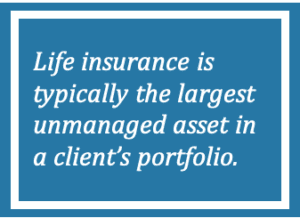Pacific Prime - Truths
Pacific Prime - Truths
Blog Article
Pacific Prime for Beginners
Table of ContentsPacific Prime Fundamentals ExplainedThe 9-Second Trick For Pacific PrimeThe Greatest Guide To Pacific PrimeFascination About Pacific PrimeHow Pacific Prime can Save You Time, Stress, and Money.

This is since the information were accumulated for a duration of solid economic efficiency. Of the estimated 42 million individuals that were without insurance, almost concerning 420,000 (concerning 1 percent) were under 65 years of age, the age at which most Americans come to be qualified for Medicare; 32 million were adults between ages 18 and 65, around 19 percent of all grownups in this age; and 10 million were kids under 18 years old, about 13.9 percent of all youngsters (Mills, 2000).
These quotes of the number of individuals without insurance are generated from the annual March Supplement to the Current Populace Study (CPS), carried out by the Demographics Bureau. Unless otherwise noted, nationwide estimates of people without medical insurance and proportions of the population with different sort of protection are based upon the CPS, one of the most commonly made use of source of estimates of insurance protection and uninsurance rates.
Top Guidelines Of Pacific Prime

Still, the CPS is especially useful due to the fact that it generates annual quotes relatively swiftly, reporting the previous year's insurance protection estimates each September, and because it is the basis for a consistent collection of price quotes for even more than twenty years, permitting evaluation of trends in protection in time. For these reasons, along with the comprehensive use of the CPS in other researches of insurance policy coverage that exist in this report, we rely on CPS price quotes, with restrictions noted.

The price quote of the number of without insurance individuals increases when a population's insurance standing is tracked for several years. Over a three-year period starting early in 1993, 72 million individuals, 29 percent of the united state populace, were without coverage for a minimum of one month. Within a solitary year (1994 ), 53 million people experienced at the very least a month without coverage (Bennefield, 1998a)
6 out of every ten without insurance grownups are themselves employed. Working does enhance the possibility that one and one's household participants will certainly have insurance, it is not a warranty. Even participants of family members with two full time breadwinner have practically a one-in-ten opportunity of being uninsured (9.1 percent without insurance rate) (Hoffman and Pohl, 2000).
How Pacific Prime can Save You Time, Stress, and Money.
New immigrants account for a substantial proportion of people without wellness insurance. One evaluation has actually attributed a significant part of the recent development in the size of the U.S. uninsured populace to immigrants that arrived in the nation in between 1994 and 1998 (Camarota and Edwards, 2000). Recent immigrants (those who involved the USA within the previous 4 years) do have a high rate of being without insurance (46 percent), yet they and their children account for just 6 percent of those without insurance country wide (Holahan et al., 2001).
The partnership between health and wellness insurance coverage and access to care is well established, as documented later in this phase. Although the partnership between medical insurance and health and wellness results is neither direct neither straightforward, a comprehensive scientific and health and wellness solutions research literature links medical insurance coverage to enhanced access to care, much better quality, and enhanced individual and population health standing.
Levels of evaluation for checking out the results of uninsurance. This conversation of health and wellness insurance policy protection focuses mostly on the U.S. populace under age 65 since practically all Americans 65 and older have Medicare or other public coverage. In addition, it focuses specifically on those without any kind of health insurance coverage for any size of time.
Our Pacific Prime Diaries
The issues faced by the underinsured are in some respects comparable to those dealt with by the uninsured, although they are typically less extreme. Health and wellness insurance coverage, nonetheless, is neither essential neither sufficient to obtain access to clinical solutions. The independent and direct impact of wellness insurance policy coverage on access to health solutions is well established.
Others will certainly obtain the healthcare they require even without medical insurance, by spending for it expense or seeking it from companies who use care cost-free or at highly subsidized prices. For still others, health insurance alone does not make certain receipt of care as a result of various other nonfinancial barriers, such as a lack of wellness care suppliers in their neighborhood, limited accessibility to transport, illiteracy, or linguistic and social distinctions.
Not known Details About Pacific Prime
Formal research this page regarding without insurance populaces in the United States dates to the late 1920s and early 1930s when the Committee on the Cost of Medical Care generated a series of reports about financing medical professional workplace check outs and hospital stays. This concern became prominent as the numbers of medically indigent climbed during the Great Clinical depression.
Report this page